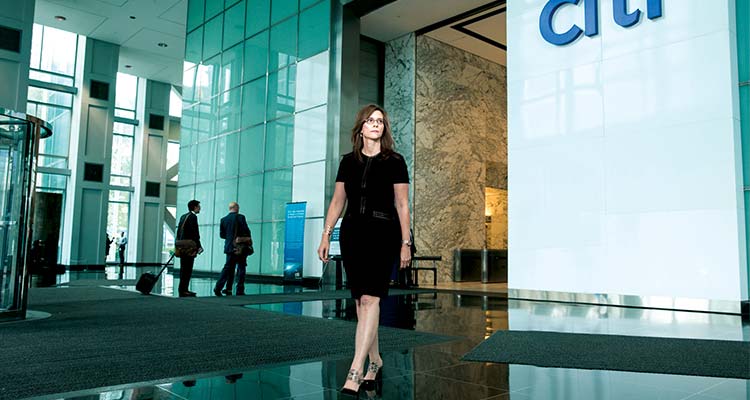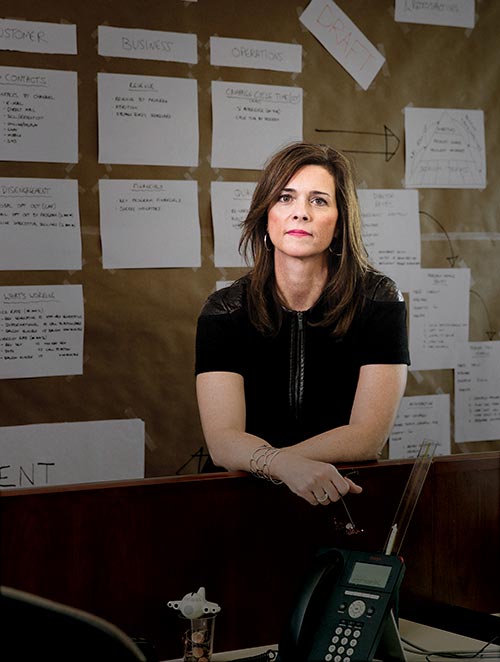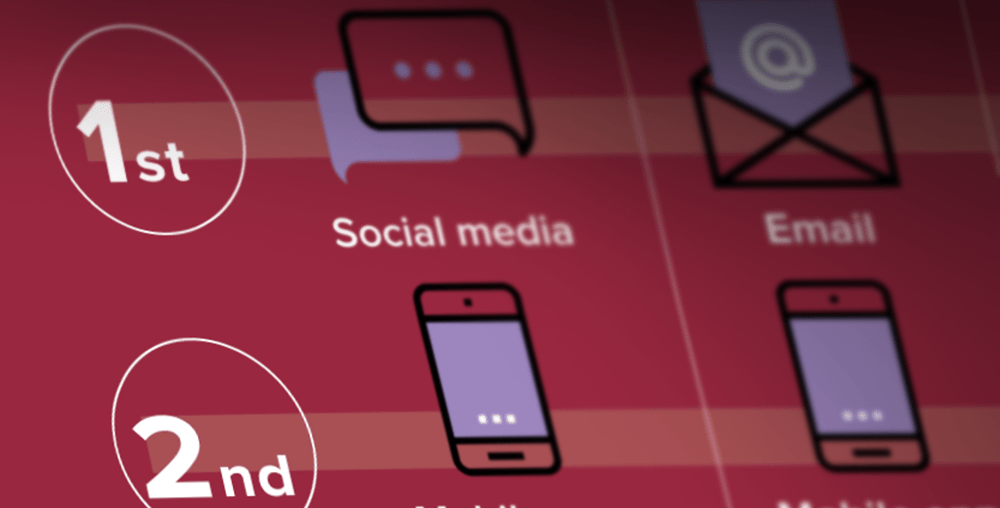Citi’s Customer Experience Transformation
It is do or die time for financial services.
Banks are still coming to terms with the effects of the Great Recession. Scrutiny is high. Consumer trust is fragile. And a booming fintech sector is set to disrupt industry titans.
The game is quickly changing. How can companies remain relevant to today’s customers? Transform into an institution that elevates experience above all, says Alice Milligan, managing director and chief customer and digital experience officer at Citi. “In the coming years, customer experience will overtake price and product as a key brand differentiator Share on X,” she says. “[Citi’s] extensive analysis shows that engaged customers will use our products, drive more spend, and are more likely to have multiple cards instead of just one. Engaging customers directly correlates to driving the long-term growth and health of our business. Customer experience is key to sustained loyalty and essential to the bottom line.”
All of this has set the stage for Ms. Milligan’s central mission since joining Citi in 2014: Heighten the bank’s customer-centric culture and establish an operating model that allows for greater speed and agility in meeting customer needs.
Defining the Transformation Framework
Ms. Milligan’s effort to elevate Citi’s customer experience has been built around three pillars.
1. Improve and streamline product offerings: Over the past few years, Citi has increased its focus on core products. “Our biggest challenge initially was managing and streamlining hundreds of different products worldwide. We’ve since reduced our number of product variations by over 60 percent,” Ms. Milligan says. In tandem, investments were also made in improving and marketing those core products.
2. Build a strong brand: “To us, this means ensuring that all customer touchpoints and communications reflect our brand purpose, enabling us to make a human connection with customers,” Ms. Milligan says. For more than 200 years, Citi’s brand promise has been to “enable progress.” To help bring that promise to life, Citi has conducted extensive customer research, including interviews and surveys, to inform the redesign of customer journeys and help define the voice, language, and personality of the company’s customer communications.
3. Focus on service via all channels: Ms. Milligan realized early on in her tenure that an omnichannel experience was the only way Citi could truly serve its entire customer base. “Customers want a seamless, real-time and personalized experience from channel to channel Share on X,” she says. “They have higher expectations to be able to complete activities online, on their own, without having to call us. As we looked at how our customers were behaving, we observed a great deal of channel switching, with a significant portion of inquiries to our call center coming from customers who had been online and unable to complete what they wanted to do.”
“It’s about finding the right combination so that, no matter how, where or when the client wants to interact with us, we’re ready with a solution that is better than what they can get anywhere else.”
To make the experience more seamless, the team worked to identify the primary reasons customers typically interacted with Citi via phone. It then made changes to ensure the task was just as easy (or easier) to complete using online or mobile (where over 70 percent of Citi inquiries are now made).
Citi has made significant enhancements to its mobile app to enable customers to use it as their primary channel versus a companion channel. The company has introduced features such as PDF statements, complimentary FICO scores and just recently, Citi Quick Lock, which allows customers to instantly block new charges with a simple tap or click if they misplace their card. And Ms. Milligan says there are more enhancements in the pipeline, all to achieve a common purpose: Make customers’ lives easier and better address their needs now and in the future as digital and mobile increasingly become a centerpiece of their lives.

But Citi has not neglected the brick-and-mortar customer experience. Instead, fellow teams within Citi have evolved the in-store experience by transforming branches so that face-to-face interactions are more about advice and consultation, rather than transactions. “It’s not an either-or approach,” Ms. Milligan says.
Combined, these three components can build loyal and engaged customers. They “create a compelling value proposition that can drive an emotional and lasting connection with customers,” Ms. Milligan says. “It goes beyond satisfaction—it inspires customers to be true promoters of our brand and products.”
Redefining the Culture
As with any large-scale change management project, Citi’s customer experience transformation had to begin at its core. To pivot toward a customer-centric culture, Ms. Milligan and her team established an internal governance consultancy program in which subject-matter experts from various departments help bank partners in every step of the product cycle. As part of the governance effort, Ms. Milligan and her team also made customer co-creation, rapid prototyping, and user acceptance testing a requirement prior to new product launches.
“Customer research is now required for all initiatives to help us validate concepts and test new ideas, experiences, and content with our prospective and existing users,” Ms. Milligan says.
She and her team also conducted training sessions in which they shared best practices with front-line employees to help the teams understand the importance of engaging the customer from start to finish. “We created avenues for our employees to share their ideas so we can harness the power of those who are at the forefront of customer experience,” she says.
For example, the company launched an ideation platform called Voice It where employees can submit ideas and are guaranteed a response from a company lead within 24 hours. If an idea is determined to be worth pursuing, the originating employee is often brought in to collaborate on the project.

The Burden of Proof
In an analytical and metrics-driven organization like Citi, proof points were necessary to get everyone on board for the transformation Ms. Milligan had in mind. “Senior leadership had to have early wins in order for us to gain buy-in for expansion of our efforts,” she says. “Our own internal team needed to believe—really believe—that our approach was working and having an impact. And the broader organization needed to envision how this change was essential to our future state.”
As a first step, Ms. Milligan built out the necessary data platforms that would allow Citi to accurately measure its customer experience. This involved consolidating multiple sources of information, from Net Promoter Score (NPS) surveys (read more about Net Promoter Scores) to data feeds from the organization’s various service channels.
One of the team’s early wins focused on reducing site errors and digital defects that were causing customers to frequently dial into the call centers. Within a year of focused efforts, they were able to minimize call volumes and deliver savings to the organization.
“We were then able to expand the scope of our work and garner support from other functions across the organization to dedicate more resources to continual customer experience improvements, while also making greater investments to elevate the digital experience,” Ms. Milligan says.
Understanding the Journey
But before Ms. Milligan and her team made any significant changes to that experience, they needed to understand what the customer journey for Citi truly looks like.
Over the past year, Ms. Milligan has focused significant efforts on defining and refining the six customer journeys that represent the top 80 percent of interactions customers have with Citi. “We’ve conducted deep analysis on these journeys, engaged in extensive research, prototyped new approaches and delivered enhancements via agile releases,” she says. “It’s crucial to understand the holistic consumer experience, including the handoffs from one channel to another within a customer’s journey, and understand customer needs, desires and pain points at each step.”
“Customer experience is key to sustained loyalty and essential to the bottom line.”
For example, one journey Ms. Milligan and her team reviewed and revised based on customer research was payments. The team worked to make the process seamless across all channels, including call centers, web, and mobile. Changes included intuitively designed payment flows and real-time validation, focused on simplifying the experience and improving speed to purpose.
Results thus far have been encouraging. For example, the improvements to the payments journey drove a 31 percent increase in the bank’s payments’ NPS, and improvements to the “check balance and account activity” journey have resulted in a 36 percent lift in NPS.
Although proud of this progress, Ms. Milligan is not satisfied. “Our work will never be done,” she says. “It’s about finding the right combination so that, no matter how, where or when the client wants to interact with us, we’re ready with a solution that is better than what they can get anywhere else.”



